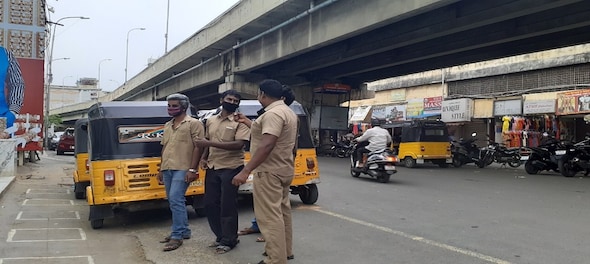
Over the last year and a half, the perspective around urban mobility has dramatically shifted. The devastating second COVID-19 wave and warnings around a likely third one have made hygiene, safety and social distancing top-of-mind considerations. In turn, they are influencing travel needs and mode preferences across the socio-economic spectrum.
Unsurprisingly, the ability to exercise travel choices aligned with one’s needs is skewed in favour of the economically privileged and the non-disabled.
Today, as businesses roll back work from home, schools open up, and the desire for meeting friends and family becomes more pronounced, Safe, Accessible, Reliable and Affordable (SARA) transportation assumes greater importance. For the 100+ million Indians with disabilities, this need has become all the more critical now.
Even before the pandemic, Persons with Disabilities (PwDs) lived with significant transport disadvantages. Take for instance Bharat (name changed), a student using a wheelchair from Mumbai who simply isn’t able to enter many local train stations because of stairs at the entrance. Furthermore, the unavailability of a schedule of accessible buses prevents him from riding a bus.
Similarly, Usha, a visually impaired teacher from Delhi is exasperated when buses don’t stop for her and her students with the disability.
Such infrastructural and attitudinal barriers constitute a denial of basic service for the PwDs. Unfortunately, the travel challenges have only compounded after the onset of the COVID-19 pandemic, ultimately further limiting their ability to fully participate in the economy.
After the pandemic, identifying and boarding a bus independently has become more difficult for Usha. Earlier, she relied on sighted help from co-passengers to read the bus number. However, now people are less forthcoming to assist because of the potential risk of exposure or because they don’t want to risk forgoing a seat in buses operating at a reduced capacity. Many of Usha’s students who relied on a sense of smell for navigation regret the loss of this faculty because of masks. Similarly, Arun (name changed), a data entry professional living with hearing loss is unable to comprehend transport staff or co-passengers as masks muffle their speech. These constraints together restrict access to socio-economic opportunities for PwDs.
 Source: Ola Mobility Institute
Source: Ola Mobility InstituteThe trouble is that the travel needs of Persons with Disabilities are often poorly understood by transport planners. As a result, they are frequently missed in the design and planning phase of transport projects. A recent multi-stakeholder report by Ola Mobility Institute titled ‘On The Move: Urban travel experiences of Persons with Disabilities and a path to build more inclusive transport systems’, brings out important nuances of travelling with a disability.
It demonstrates that the travel patterns of PwD match that of non-disabled individuals. The report adopts a trip -chain lens and highlights that a breakdown at any point from trip planning to payments or even filing complaints renders travel inaccessible. PwDs budget additional time to negotiate with any transport inaccessibility that may come up. This, however, leaves them with reduced time for productive activities.
The report also validates that getting to a bus stop, a train station, or hailing a rickshaw or a taxi is more challenging than the actual journey in the vehicle. Through interviews and focused group discussions with the disabled members of 8 pro-disability organisations, the report establishes how the COVID-19 related travel restrictions disproportionately impact PwDs adding to their transport poverty.
This begs the question, for a country grappling with myriad challenges, why shouldn’t inclusive transportation be a priority? According to the International Labour Organisation, the cost of excluding PwD can be as high as 7 percent of a country’s GDP. Given India’s forecasted 2021-22 GDP of approximately $2.8 trillion, this could mean a lost opportunity of nearly $232 billion.
So, what can be done to improve the accessibility and inclusivity of transport systems? The report makes several recommendations: (1) Mandate collection of up-to-date gender age and disability (GAD) disaggregated population and transport data to inform transport planning and development; (2) Notify/update standards of accessibility for the physical and digital infrastructure across the trip chain; (3) Ensure that the country's disaster response, especially with respect to transportation, is disability-inclusive; (4) Announce fiscal incentives for accessible transportation thus encouraging the industry to invest in the development and production of accessible transport solutions; (5) Senior management, tech teams, and customer facing staff of automobile companies and transport operators to undergo disability sensitisation training
Also Read: Need for speed: Moving cities faster
India is on a mission to build a more resilient and prosperous economy coming out of the pandemic. For this, the country must empower every citizen to reach their full potential. Transport systems are the life arteries of any economy, and when these systems are under-equipped to empower a nation’s diverse population, it inhibits its growth and development. Thus, there is an urgent need to build transport systems that are more accessible and inclusive for all, especially to include the 100 million+ Persons with Disabilities residing in the country.
Apoorv Kulkarni heads Accessibility and Inclusion at the Ola Mobility Institute and is the author of the report titled: On The Move: Urban travel experience of Persons with Disabilities and a path to build more inclusive transport systems.
(Edited by : Kanishka Sarkar)
First Published: Nov 17, 2021 9:08 AM IST
Check out our in-depth Market Coverage, Business News & get real-time Stock Market Updates on CNBC-TV18. Also, Watch our channels CNBC-TV18, CNBC Awaaz and CNBC Bajar Live on-the-go!


Shehnai by Ustad Bismillah Khan's kin, ode to Kashi's celebrities: PM Modi's roadshow to showcase Varanasi's grandeur
May 13, 2024 11:03 AM
Piyush Goyal speaks on '400 paar' target, Maharashtra power play and more | Full text
May 13, 2024 9:00 AM
Why low voter turnout continues to be a serious subject of discussion as Phase-4 voting begins today
May 13, 2024 8:32 AM
Only 12% of candidates in fray in phase 5 are women, says ADR
May 13, 2024 7:15 AM

